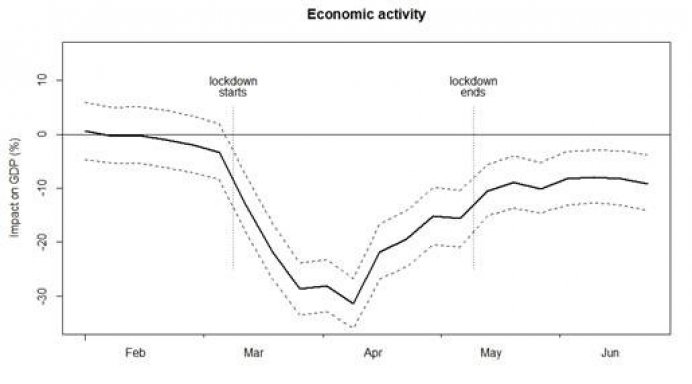Articles

A method that uses electricity consumption data can monitor GDP in real time, the researchers say
Electricity data shows real-time GDP change during COVID-19 lockdown
Electricity market data can play a vital role in measuring the impact of COVID-19 and lockdown policies on GDP, according to a new study.
University of Exeter Business School researchers have pioneered a method of assessing the health of economies in almost real time, which they hope could inform future lockdown policies.
Official GDP statistics are typically released with a delay of three months – but a method that uses electricity consumption data can monitor GDP in real time, the researchers say.
The study is published in Environmental and Resource Economics.
“Electricity contributes to virtually every human activity and the relationship between electricity consumption and economic development is well established,” said lead author Dr Carlo Fezzi, of the University of Exeter Business School’s Land, Environment, Economics and Policy Institute.
“In this time of uncertainty and economic downturn, policy-makers urgently require timely indicators to monitor in real-time the impact of COVID-19 on the economy and understand the causal impact of policies designed both to contain the virus and stimulate production and consumption after restrictions are lifted.”
The researchers used Italy as a case study – the first European country to go into lockdown – and analysed data from the Italian day-ahead power market, where electricity is traded on an hourly basis.
They found that electricity consumption for 2015-19 displayed very similar patterns – patterns that repeated for 2020 until the day lockdown measures were brought in.
The study therefore estimates a projected path for electricity consumption in 2020 that assumes the pandemic hadn’t happened, controlling for the effects of all the main drivers of consumption, including air temperature, holidays and seasonality.
Comparing the projected path with actual consumption and using a rescaling approach, the researchers then estimated the impact of COVID-19 on GDP.
The study estimates a 5.1% drop in GDP for the first quarter of 2020, which tallies with official figures of 5.3 % from Eurostat and the OECD – proving the method’s accuracy.
The study goes on to estimate a 30% GDP reduction during the three weeks of strictest lockdown in March and April, when most of Italy’s factories shut down and only supermarkets, pharmacies and other essential services were allowed to remain open.
In May there were signs of recovery as Italy started easing its lockdown, with an average GDP reduction of 11% against the projected level without a pandemic.
The study finds that by the end of June 2020 this recovery had plateaued, with GDP 8.5% below the expected level. This indicates that the economic recovery from COVID-19 has still some way to go.
Dr Fezzi added: “A strength of our approach is that it is widely applicable. It only requires data on electricity consumption and temperature, and such information is publicly available for virtually all developed economies in the world.
“However, it is important to note that our estimates need to be interpreted as the overall impact of COVID-19, and not as the impact of specific lockdown policies. For example, countries that did not implement any lockdown, such as Sweden, are also experiencing significant reductions in GDP. Related to this, we are currently extending our analysis to several different European countries in order to compare GPD dynamics across nations.”
Real-Time Estimation of the Short-Run Impact of COVID-19 on Economic Activity Using Electricity Market Data by Fezzi, C., Fanghella is published in Environmental and Resource Economics.
The below graph from the study illustrates the estimated impact of COVID-19 on Italy’s GDP. The solid line represents the average impact in each day while the dashed line are the 95% confidence intervals.

Date: 5 August 2020
